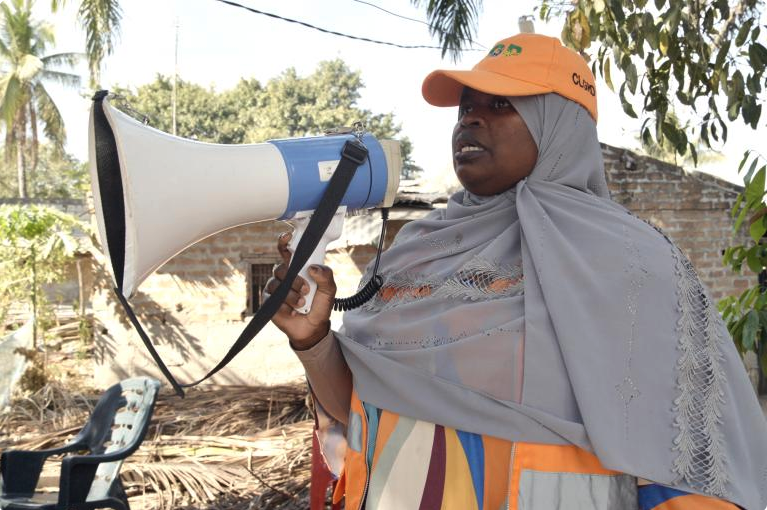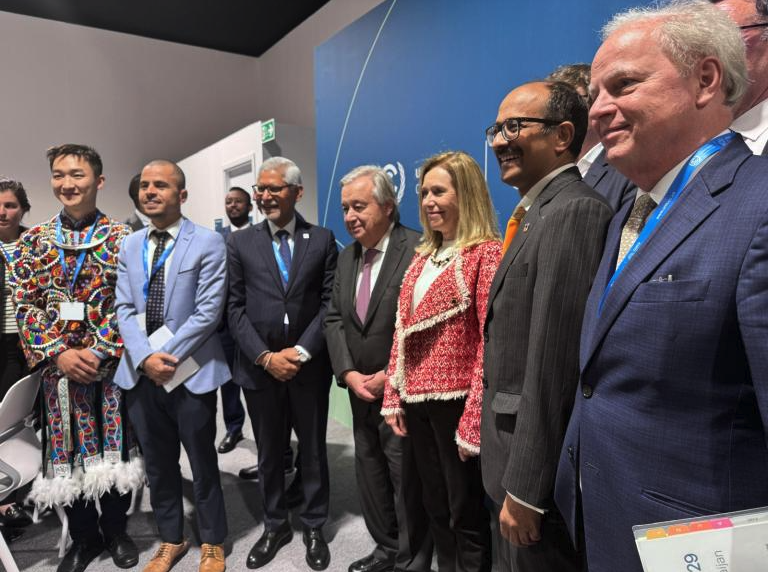Early Warnings for All advances but new challenges emerge
Published: November 13, 2024
Baku, Azerbaijan (WMO) – A flagship campaign to ensure that everyone on Earth is protected life-saving early warning systems is advancing and accelerating. But the most vulnerable countries continue to suffer disproportionately. And whilst floods and storms have traditionally been associated with the worst losses, extreme heat has emerged as a major killer.
Key messages
- Early warning services provides ten-fold return on investment
- Progress is uneven and disaster impacts disproportionate
- Extreme heat is becoming a major killer
- COP29 must deliver new climate finance goal

A top-level event at COP29 in Baku, Azerbaijan, heard calls from government leaders for a new sense of urgency, matched by injection of funding, know-how and technology, for the UN Secretary-General’s Early Warnings for All (EW4All) initiative. This seeks to ensure that everyone on Earth is protected from hazardous weather, water or climate events through life-saving early warning systems by the end of 2027.
“This is on track to be the hottest year in the history books. It has scorched countries and communities with temperatures that push the limits of human endurance. And around the world, we’ve seen record rains and hurricanes, historic fires, and deadly droughts,” said António Guterres, who convened the event. It had a particular focus on extreme heat.
“In this era of climate catastrophe, early warning systems and protection from extreme heat are not luxuries. They are necessities. And sound investments: Early warning systems provide an almost ten-fold return,” he said.
COP29 President Mukhtar Babayev cited estimates that investment in early warnings could avert losses of up to US $16 billion per year.
The President of the Federal Republic of Ethiopia, Taye Atske Selassie, recalled the prolonged drought and more recent flooding and landslides which have claimed so many lives and displaced many thousands of people. His country is committed to strengthening investment in hydrometeorological capacity and early warnings, he said.
The President of the Maldives, Dr Mohamed Muizzu, said his island nation is strengthening impact-based forecasting systems to enable enhanced forecasting and timely alerts which reach everyone at the right time and in the right place.
Greek Prime Minister Kyriakos Mitsotakis recalled devastating fires that have caused repeated tragedies in his country – testimony which was echoed by numerous other government ministers at the event. It also bought together senior representatives of development and philanthropic organizations, donor governments, technology companies and civil society.
“The climate crisis demands a collective, “whole-of-society” approach, reaching across sectors and disciplines. Broadening the tent is not just about involving more actors; it’s about empowering everyone to champion Early Warning Systems as a core priority,” said WMO Secretary-General Celeste Saulo, who stressed that National Meteorological and Hydrological Services are the lynchpin of early warnings.
Global Status of Multi-Hazard Early Warning Systems
The good news is that, according to this year’s report on the Global Status of Multi-Hazard Early Warning Systems (MHEWS), the world is at its highest levels of reported early warning coverage since 2015.
The bad news is that there continues to be a disproportionate impact of disasters on different countries. The report shows that countries with less comprehensive MHEWS have a disaster-related mortality ratio that is nearly six times higher than that of countries with ‘substantial’ to ‘comprehensive’ coverage, and nearly four times more disaster-affected people.
“Progress remains uneven. Half of the countries in Africa and only 40 per cent of countries in the Americas and the Caribbean have reported the existence of Multi-Hazard Early Warning Systems,” write Kamal Kishore, Special Representative of the UN Secretary-General for Disaster Risk Reduction and Head of the UN Office for Disaster Risk Reduction (UNDRR) and Celeste Saulo, WMO Secretary-General.
“But even among countries with such systems, many still have gaps in one or more of the four pillars: risk knowledge, forecasting and detection, warning dissemination, and early action,” they write.
The report sets out the latest data and findings relating to the coverage and comprehensiveness of MHEWS globally, with 12 key findings, supported by a series of recommendations to scale up action to save lives and change lives.
UNDRR, WMO, the International Telecommunications Union (ITU) and International Federation of Red Cross and Red Crescent Societies (IFRC) are implementing partners of EW4All. Thirty countries were initially prioritized for fast-track action, but this has now been expanded. At the same time, new partners including the private sector are being brought on board to ensure broader reach and impact.
WMO and its 193 Members have made Early Warnings For All a top priority, with
53 active projects in 103 countries and expanding to 30 more countries through 14 more projects.
But much more needs to be done – and this can only be achieved through high-level political support within countries and national ownership. There needs to be a major effort to scale-up investment, both through providers of bilateral and multilateral funds and through public-private partnerships, and to simplify access to early warning system finance.
Despite advances in technology and innovation, from mobile phones to machine learning and AI, there are still significant challenges in connecting all relevant actors and adapting to on-the-ground realities.
“COP29 must build on the momentum, and deliver a new climate finance goal that sees a surge in funds for climate action,” Mr Guterres told the COP29 event.
